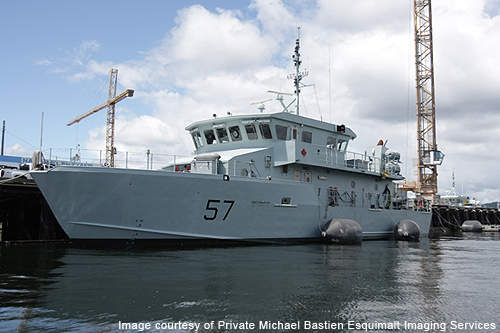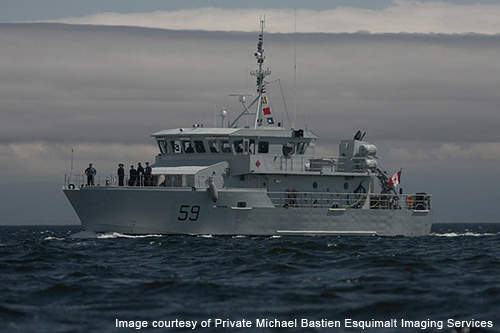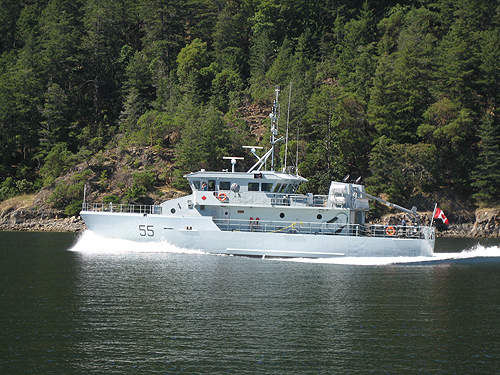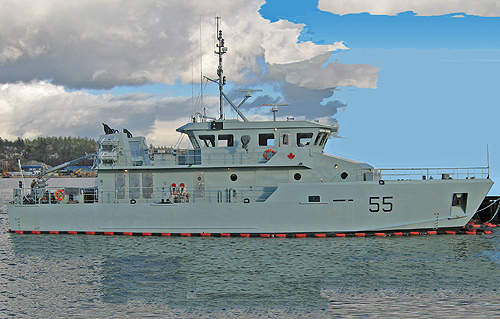The Orca is a class of steel-hulled patrol boats constructed by Victoria Shipyards for the Canadian Navy. Eight vessels delivered between 2006 and 2008 replaced the 50-year old, wooden-hulled, Yard Auxiliary General (YAG) training vessels. Based at CFB Esquimalt, the Orca Class vessels are primarily used as training platforms.
In November 2004, the Department of National Defence (DND) placed a $69.7m order with Victoria Shipyards for six new ships, with an option for two more vessels. The design was completed in May 2005 and construction began in mid-2005. The first ship in its class, Orca (PCT 55), was laid down in September 2005, launched in August 2006 and delivered in November 2006.
The remaining vessels delivered include Raven (PCT 56) – March 2007; Caribou (PCT 57) – July 2007; Renard (PCT 58) – September 2007; Wolf (PCT 59) – November 2007; Grizzly (PCT 60) – March 2008; Cougar (PCT 61) – July 2008 and Moose (PCT 62) – November 2008.
Orca Class design and features
The Orca Class design is based on the Pacific Class patrol boat built by Tenix Defence for the Australian Navy. The all steel hull is strengthened and also stretched by 5% over the Tenix boat. The design incorporates mock training stations on an enhanced bridge. These training stations feature modern communication and navigation equipment found in major warships. The vessel has the capacity to store 25,000l of fuel oil, 11,000l of fresh water and 800l of lubricating oil.
It has overall length of 33m, beam of 8.34m and draught of 2m. Displacement of the ship is 210t. The ship can complement 20 personnel including four crew and 16 trainees.
Orca Class missions
The Orca Class craft are primarily used to train naval officers and introduce sea cadets to shipboard life. The ships can also be deployed in support of other operations if required. They provide commanders a greater ability to monitor coastal lines.
The high speed and excellent manoeuvrability allows the Orca Class to conduct port security operations, search and rescue, exercises and other similar duties. Orca Class ship is an ideal training platform with the similar capability found in the bridge simulator at the Naval Officer Training Centre and on the bridges of the larger ships of the Canadian Navy. This allows officers and sailors to obtain training in conditions that are similar to real-time environment.
The Orca Class boats support the requirements of the Regular Force Junior MARS officer training at the Naval Officer Training Centre, Canadian Forces Fleet School Esquimalt, Naval Reserve Divisions and the Pacific Region Cadets.
Armament
The vessels are not equipped with any weapon systems as they were designed for training missions, but feature a strengthened foredeck to accept a 12.7mm M2 machine gun mount.
Navigation and communications
Orca is equipped with Pathfinder NCS 18 X-band navigation radar to enhance conversions from shore-based simulators. The vessel also features MX420 DGPS (Differential GPS), Anschütz gyro, Raytheon GDS101 eco sounder and an Anschütz pelorus.
The communication equipment includes Sailor RT4822 VHF-DSC, SP3300 VHF portable, Taiyo TD-L1630A VHF DF, Sailor HC4500B MF/HF/SSB, Wulfsberg RT-5000 multiband transceiver, Kannad Search and Rescue Transponder (SART) and S1210 EPIRB (Emergency Position Indicating Radio Beacon).
Propulsion
The Orca Class is powered by two Caterpillar 3516 diesel engines driving twin shafts with two rudders. The engines deliver a total power output of 1,825kW. Onboard power is supplied by three 72kW Caterpillar 3054 diesel gensets. The propulsion system provides a top speed of over 20kt (37km/h) and a maximum range of 750nm at 15kt.
Accommodation
Accommodation facilities are provided for 20 personnel. The vessel has two crew cabins for the crew of four and three large student cabins for 16 trainees. Four spare berths are provided for additional occupants.
The Global Naval Surface Combatants and Warfare Systems Market 2011-2021
This project forms part of our recent analysis and forecasts of the global naval surface combatants and warfare systems market available from our business information platform Strategic Defence Intelligence. For more information click here or contact us: EMEA: +44 20 7936 6783; Americas: +1 415 439 4914; Asia Pacific: +61 2 9947 9709 or via email.







